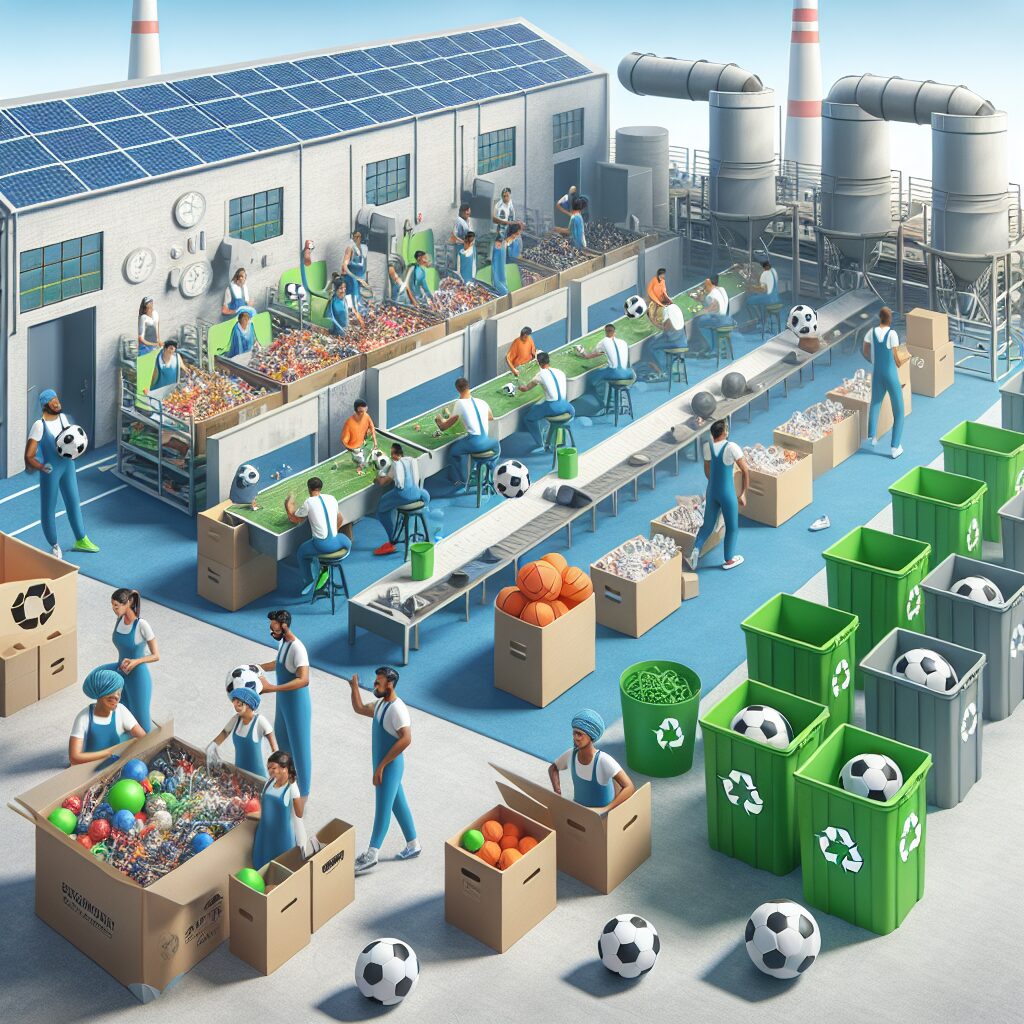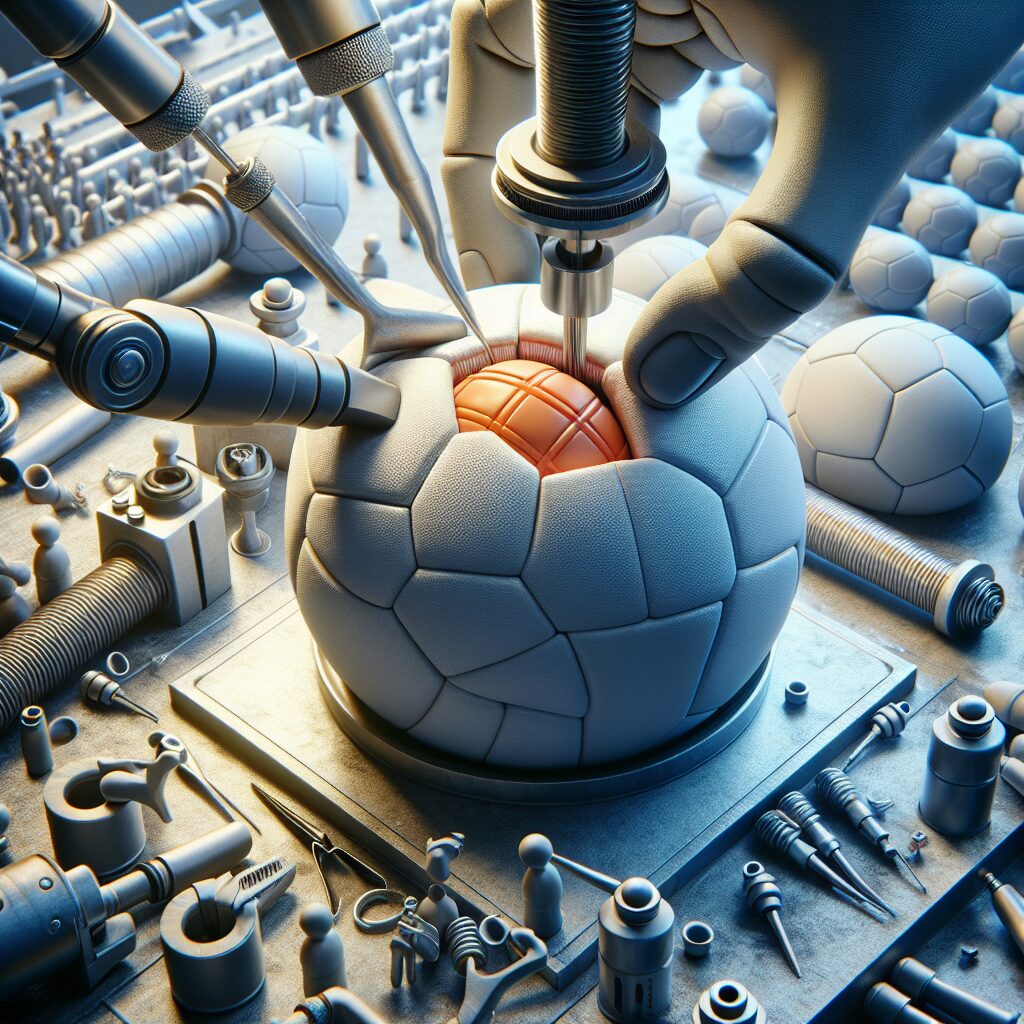Sustainability in sports ball production is a growing trend that has gained significant attention in recent years. With the increasing global focus on environmental conservation and responsible manufacturing practices, the sports industry is starting to recognize the importance of sustainable production methods for sports balls. A key aspect of sustainability in this context refers to the use of eco-friendly materials and processes throughout the entire production cycle, from sourcing raw materials to manufacturing and disposal.
As concerns about climate change and environmental degradation continue to rise, the negative impacts associated with traditional sports ball production cannot be ignored. The widespread use of non-renewable resources, such as synthetic materials derived from fossil fuels, has detrimental effects on the environment. Additionally, the production process often involves the release of harmful chemicals and pollutants into the air and water systems. Recognizing these issues, manufacturers are now exploring alternative materials and approaches that minimize the ecological footprint of sports ball production.
In the following sections, we will delve into the key takeaways of sustainability in sports ball production. We will discuss the benefits of using eco-friendly materials, such as organic and recycled fibers, in the manufacturing process. Furthermore, we will explore the innovative techniques being employed to reduce waste, promote recycling, and extend the lifespan of sports balls. By examining these aspects, we aim to shed light on the growing trend of sustainability in sports ball production and its positive impacts on both the environment and the sports industry as a whole. Stay tuned for an in-depth analysis of the strategies and practices that are shaping the future of sports ball manufacturing.
Key Takeaways
1. Sustainability in sports ball production is becoming a prominent trend as various companies are adopting eco-friendly measures to mitigate the environmental impact of their operations.
2. Many ball manufacturers are using recycled or sustainable materials such as organic cotton, recycled rubber, or synthetic leather alternatives to reduce waste and carbon emissions.
3. Improved manufacturing processes, such as water-based adhesives, are being embraced to minimize the use of harmful chemicals and reduce air and water pollution.
4. Companies are actively pursuing certifications like Fair Trade or Forest Stewardship Council (FSC) to ensure ethical and responsible sourcing of materials, fair treatment of workers, and overall sustainability.
5. Collaborations between sports brands and environmental organizations are driving innovation in sustainable ball production, promoting circular economy models, and raising awareness about the importance of sustainable practices in the sports industry.
Material Selection for Sustainable Sports Ball Production
One crucial aspect of sustainability in sports ball production is the careful selection of materials. Manufacturers are now opting for eco-friendly materials such as recycled rubber, organic cotton, and natural latex. These sustainable alternatives not only reduce the environmental impact but also maintain the high performance expected from sports balls.
Manufacturing Processes that Promote Sustainability
The production processes involved in manufacturing sports balls are also being improved to promote sustainability. Brands are adopting techniques such as energy-efficient machinery, waste reduction, and water recycling. These measures help minimize the carbon footprint and conserve valuable resources throughout the manufacturing process.
Fair Trade and Ethical Practices in Sports Ball Production
Sustainability in sports ball production goes beyond environmental considerations. It also involves ensuring fair trade and ethical practices throughout the supply chain. Brands are increasingly working with suppliers that prioritize fair wages, safe working conditions, and the absence of child labor. This not only supports workers’ rights but also contributes to the social sustainability of the industry.
End-of-Life Solutions for Sports Ball Disposal
Considering the end of a sports ball’s life cycle is another important aspect of sustainability. Manufacturers are exploring innovative recycling programs and implementing take-back initiatives. These initiatives enable sports balls to be properly disposed of or recycled, preventing them from becoming another item in the landfill and prolonging their useful life.
Certifications and Standards in Sustainable Sports Ball Production
To ensure transparency and credibility, various certifications and standards have been developed for sustainable sports ball production. These certifications, like the Fair Trade label or the Global Organic Textile Standard, help consumers identify products that meet specific environmental and ethical criteria. They provide assurance that the sports balls they purchase are produced sustainably.
Collaborations and Partnerships for Sustainable Innovation
Sustainability in sports ball production involves collaboration among various stakeholders. Manufacturers, industry associations, NGOs, and research institutions are joining forces to drive sustainable innovation forward. Through partnerships, they can share knowledge, resources, and best practices to continuously enhance the sustainability of sports ball production processes.
How can you contribute to sustainable sports ball production?
- Choose sports balls made from eco-friendly materials.
- Support brands that prioritize fair trade and ethical practices.
- Properly dispose of old sports balls and explore recycling options.
- Look for certifications and labels that indicate sustainable production.
- Stay informed about the latest sustainable innovations and practices in the industry.
Frequently Asked Questions
1. What is sustainability in sports ball production?
Sustainability in sports ball production refers to the practice of manufacturing sports balls using environmentally friendly materials, processes, and practices that minimize their impact on the environment throughout their lifecycle.
2. Why is sustainability important in sports ball production?
Sustainability is important in sports ball production because it helps to reduce the environmental footprint of manufacturing processes, decreases waste generation, promotes the use of renewable resources, and conserves energy.
3. How can sustainable materials be used in sports ball production?
Sustainable materials such as organic or recycled rubber, natural and biodegradable fibers, and non-toxic adhesives and dyes can be used in sports ball production to minimize the use of non-renewable resources and reduce the environmental impact of manufacturing.
4. Are sustainable sports balls as durable as traditional ones?
Yes, sustainable sports balls can be just as durable as traditional ones. The use of sustainable materials does not compromise the quality or performance of the sports balls.
5. Do sustainable sports balls cost more than traditional ones?
In some cases, sustainable sports balls may have a slightly higher price due to the use of eco-friendly materials and production processes. However, as sustainability becomes more prevalent in the industry, the prices are expected to become more competitive.
6. Are there any certifications for sustainable sports ball production?
Yes, there are certifications such as the Fair Trade certification and the Global Organic Textile Standard (GOTS) that ensure sports balls are produced sustainably, following specific environmental and social criteria.
7. How can sports ball manufacturers promote sustainability?
Sports ball manufacturers can promote sustainability by incorporating sustainable materials, implementing eco-friendly production processes, investing in renewable energy sources, reducing waste generation, and supporting fair labor practices.
8. Can sports ball consumers make a difference in sustainability?
Yes, sports ball consumers can make a difference by choosing to purchase sports balls made from sustainable materials, opting for products that are certified as eco-friendly, and supporting brands that prioritize sustainability in their production processes.
9. Is sustainability only important for professional sports balls?
No, sustainability is important for all types of sports balls, including those used at amateur and recreational levels. Every effort to minimize the environmental impact of sports ball production contributes to a more sustainable future.
10. Will the adoption of sustainability in sports ball production continue to grow?
Yes, the adoption of sustainability in sports ball production is expected to continue growing as consumers become more conscious of the environmental impact of their choices and as regulations and industry standards evolve to prioritize sustainability.
Final Thoughts
The trend of sustainability in sports ball production is a welcome and necessary step towards minimizing the environmental impact of the sports industry. By using sustainable materials and implementing eco-friendly practices, manufacturers can reduce waste, conserve resources, and contribute to a greener future. Additionally, with increasing consumer awareness and demand for eco-friendly products, the adoption of sustainability is poised to become even more widespread in the coming years, driving positive change within the industry.
As consumers, we have the power to make a difference by choosing sustainable sports balls and supporting brands that prioritize sustainability. By doing so, we can play an active role in promoting environmentally responsible practices in sports ball production and other industries. Ultimately, sustainability in sports ball production is not just a trend but a long-term commitment to protect our planet while enjoying the sports we love.




